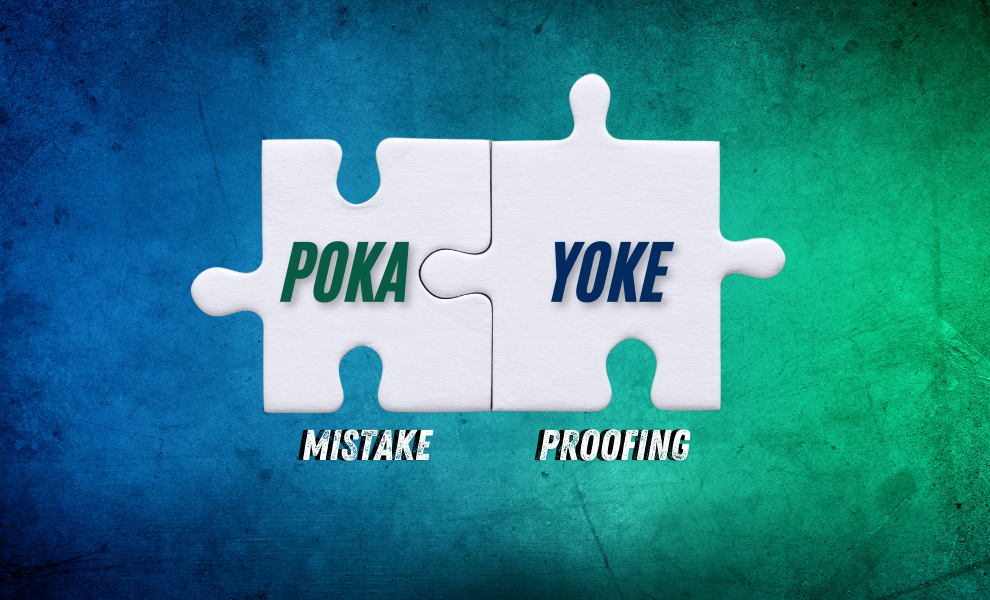Security is always of the utmost importance when it comes to online shopping and sensitive financial data access. This is where the Lean concept of Poka-Yoke comes into play. Rooted in Japanese manufacturing practices, Poka-Yoke emphasizes designing processes that prevent mistakes or detect them early enough to avoid significant impact.
This error-proofing technique not only improves product quality but also enhances overall efficiency, making it an essential part of Lean manufacturing. In this blog, we will explore the meaning of Poka-Yoke, its benefits, and its practical applications in various industries.
What is Poka-Yoke?
The Japanese phrase poka-yoke means “mistake-proofing” or “error-proofing.” Shigeo Shingo, a well-known industrial engineer who worked on the Toyota Production System in the 1960s, introduced it. The primary goal of Poka-Yoke is to eliminate human errors by designing processes that make it difficult, if not impossible, for mistakes to occur. If mistakes do happen, the system should detect them immediately so that corrections can be made before any damage is done.
At its core, Poka-Yoke revolves around creating fail-safe mechanisms in manufacturing or service processes. These mechanisms can be as simple as a checklist or as advanced as an automated system that halts production when an error is detected.
Key Benefits of Poka-Yoke
Implementing Poka-Yoke in a manufacturing or business setting offers several significant benefits:
- Reduced Defects and Errors
The primary advantage of Poka-Yoke is that it drastically reduces the chances of defects or mistakes occurring. By making errors either impossible or immediately noticeable, businesses can ensure consistent product quality. This reduction in defects minimizes the costs associated with rework, scrap, or customer complaints. - Improved Efficiency
With Poka-Yoke systems in place, processes become more efficient as errors are caught early or avoided entirely. This allows teams to focus on productive tasks rather than constantly correcting mistakes. The reduction in time spent on fixing errors also leads to faster production cycles, boosting overall operational efficiency. - Lower Training Requirements
One of the understated benefits of Poka-Yoke is that it simplifies processes, making them more intuitive. This reduces the amount of time and resources needed to train employees. Workers can quickly learn their tasks, knowing that fail-safes are in place to guide them through complex steps. - Increased Customer Satisfaction
By consistently delivering high-quality products with fewer defects, businesses that adopt Poka-Yoke can increase customer satisfaction. Customers appreciate reliability, and mistake-proof processes ensure that expectations are met every time.
Common Use Cases of Poka-Yoke
Poka-Yoke can be applied in numerous industries, from manufacturing and healthcare to software development. Below are some practical examples of how mistake-proofing is used in different settings:
- Manufacturing Industry
Poka-Yoke mechanisms are frequently employed in manufacturing to stop assembly-related flaws. For example, a machine may be designed to stop functioning if a part is not aligned correctly. This ensures that only correctly assembled products proceed to the next stage of production.
Another example is color-coding tools or parts to prevent workers from using the wrong components. Such visual cues reduce errors in assembly, leading to improved product consistency. - Automotive Industry
The automotive sector is known for its rigorous quality control, and Poka-Yoke is heavily employed here. One common example is the use of sensors in car manufacturing. These sensors ensure that every component, such as a bolt or nut, is properly tightened to the required torque. If the sensor detects an anomaly, the system halts the production line to avoid sending faulty cars down the line. - Healthcare
In healthcare, Poka-Yoke is used to prevent medical errors, which can have life-threatening consequences. One such example is the use of barcodes on patient wristbands, which are scanned before administering medication. This prevents incorrect drug administration by ensuring the right patient gets the right medication. - Service Industry
Even service-based industries can benefit from Poka-Yoke principles. In restaurants, for example, standardized portion control tools help kitchen staff avoid errors in food preparation, ensuring consistency in customer orders.
Conclusion
Poka-Yoke is a powerful tool for any organization aiming to reduce errors, improve efficiency, and enhance product or service quality. By building safeguards into the process itself, businesses can prevent mistakes before they happen or catch them early enough to avoid major repercussions.
Whether it’s preventing defective products from leaving the production line or ensuring accurate medication dosages in a hospital, Poka-Yoke ensures that processes run smoothly and consistently. As industries continue to evolve, mistake-proofing will remain a crucial element of achieving operational excellence. Implementing Poka-Yoke is a smart investment that helps businesses avoid costly errors while delivering high-quality results.
By adopting Poka-Yoke in your organization, you can significantly reduce defects, improve efficiency, and boost customer satisfaction—key outcomes for success in today’s competitive market.
You May Also Like to Read:


